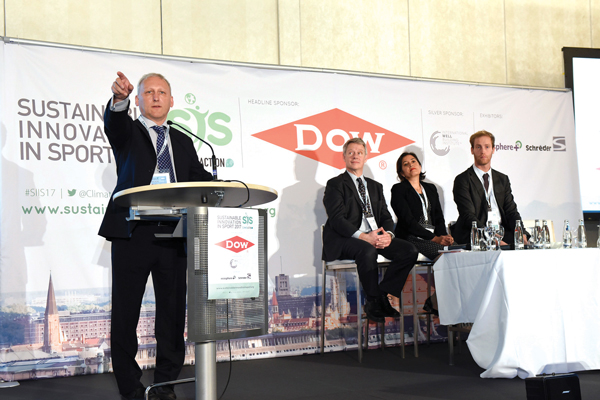In 2016, the budget of the U.S. Environmental Protection Agency was about $8.1 billion, or 0.21 percent of total federal spending, virtually a rounding error in the federal government’s $3.8 trillion budget. Put another way, the federal agency responsible for keeping the water we drink safe and the air we breathe clean, that protects us from hazardous industrial pollutants, keeps our food supply healthy, and protects our forests, streams, and rivers, has a budget one billion dollars less than
the revenue of Major League Baseball, and only two-thirds
the revenue of the National Football League.
If President Trump’s proposed budget is enacted, EPA funding will be reduced by about 30 percent, distinguishing the United States in 2017 as the only industrialized nation on Earth with a national policy committed to reducing the financial and scientific resources needed to address worsening climate change.
Does this mean that the United States cannot make progress addressing climate change? Examples from the sports sustainability movement show that is not the case.
Between 2005 and 2015 the Natural Resources Defense Council invested more than $4 million to develop a national “sports greening” program. It was the first time a major environmental organization incorporated the influence of sports into its strategic agenda. NRDC’s strategy emphasized leveraging the influence of sports to promote sustainable communities, with a particular emphasis on embedding programs into the operations of pro leagues and teams focused on reducing the threats of climate change. As part of that work, NRDC allocated more than $400,000 between 2009 and 2015 to help create the Green Sports Alliance, (where I served as a founding board member and former president).
The sustainability programs developed at those leagues have grown during the past 10 years, and now include hundreds of sports venues, teams and events from all leagues. Moreover, the Green Sports Alliance remains an important platform for sharing information about the sports industry’s good work. Millions of pounds of carbon emissions have been reduced, energy efficiency and water conservation enhancements proliferate, venues are being innovatively designed with ecological criteria in mind, recycling programs are now standard practice at events, food donation programs are expanding, food service options are becoming healthier and fans are getting the message.
 |
David Stubbs, former head of sustainability for London 2012, speaks on a panel at the conference in Munich last month. Also on stage: Niclas Svenningsen, UNFCC; Tania Braga, IOC; and Neil Beecroft, former sustainability manager, UEFA and Euro 2016.
Photo by: CLIMATE ACTION: SUSTAINABLE INNOVATION IN SPORT 2017
|
Among the most important sustainability initiatives in professional sports is the work being done by MLB, the NBA and the NHL to measure key environmental performance indicators, including energy use, water use, waste generation, and paper use. This is a program NRDC helped the leagues to create because accounting for environmental impacts is by far one of the most valuable — and money saving — initiatives any sports organization can undertake. Nor does the measurement of environmental indicators need to rely on politically uncertain government programs or funding, (although the EPA’s Energy Star, Waste Wise and other programs have helped sports teams and leagues advance their data gathering programs and save millions of dollars in the process).
Nevertheless, even a brief scan of the news confirms that unprecedented challenges remain. Intensifying climate change and historic political conflicts at home and abroad are worse today than when the leagues’ green programs were launched 10 years ago.
With that in mind, what do sustainability practitioners in sports need to do to address the dire ecological and political realities of 2017?
From my perspective, there is one highly underdeveloped need missing from virtually all sports greening programs in the United States: Carbon emissions are not being measured, and carbon reduction goals are not being established. (AEG venues stand out as a notable exception, as does the NHL’s documentation of its carbon emissions in its 2014 Sustainability Report.)
Important sports-based sustainability initiatives are thriving internationally. With that in mind, I spent several weeks in Europe meeting with sustainability experts associated with many of the world’s most influential sports organizations. My visit included participating in a meeting in Munich on Feb. 23 with 90 representatives — including many from the U.S. — who convened to further the creation of Sport and Sustainability International, a global coalition committed to, among other things, advancing the goals of the Paris Agreement, the important climate agreement approved in 2015 by 194 countries — including the U.S., China and India (and from which the current U.S. administration has threatened to withdraw).
Reflecting on those meetings, I suggest four steps for the community of U.S. sports sustainability managers to consider implementing:
■ Calculate carbon emissions leaguewide and for major events, starting with direct energy use, i.e. energy produced on-site and the energy bought, (known as Scope 1 and 2 emissions in the GHG Protocol), and expand that accounting gradually to include important effects related to team and fan travel, catering and food, paper use, and waste management (known as Scope 3 emissions).
■ Develop a multiyear, leaguewide action plan to reduce carbon emissions by requiring a shift to energy-efficient technologies such as LED lighting and the use of clean energy (no fossil fuels); provide incentives for the use of public transit, car sharing, bicycles, and e-mobility solutions; and experiment with climate-friendly menus (which I wrote about in my previous column).
■ After calculating Scope 1 and 2 carbon impacts, and major Scope 3 impacts, set “science-based carbon reduction targets” (at least a 20 percent reduction in the next five to eight years) and aim for net zero carbon emissions from league and team operations, travel, and procurement within the next 20 years.
■ Communicate and inspire your fans, host communities, and suppliers to do the same.
In the past 30 years, U.S. sports leagues have launched leaguewide public campaigns designed to inspire shifts in public behavior on racism, gay rights, women’s rights, bullying, domestic violence, literacy, school attendance, cancer research, and other worthy social causes. In 2017, facing inaction — indeed, outright hostility — from a new administration in Washington, D.C., as climate change intensifies, it is clear that the time has come for similar leaguewide public campaigns focused on inspiring action to confront the threats posed by climate change. No politician can change the fact that the world is rapidly heating up. What sports can do is more effectively document its contribution to that problem and set meaningful goals to address it.
Allen Hershkowitz is a founding director of Sport and Sustainability International (SandSI.org) and a former senior scientist at the Natural Resources Defense Council.





